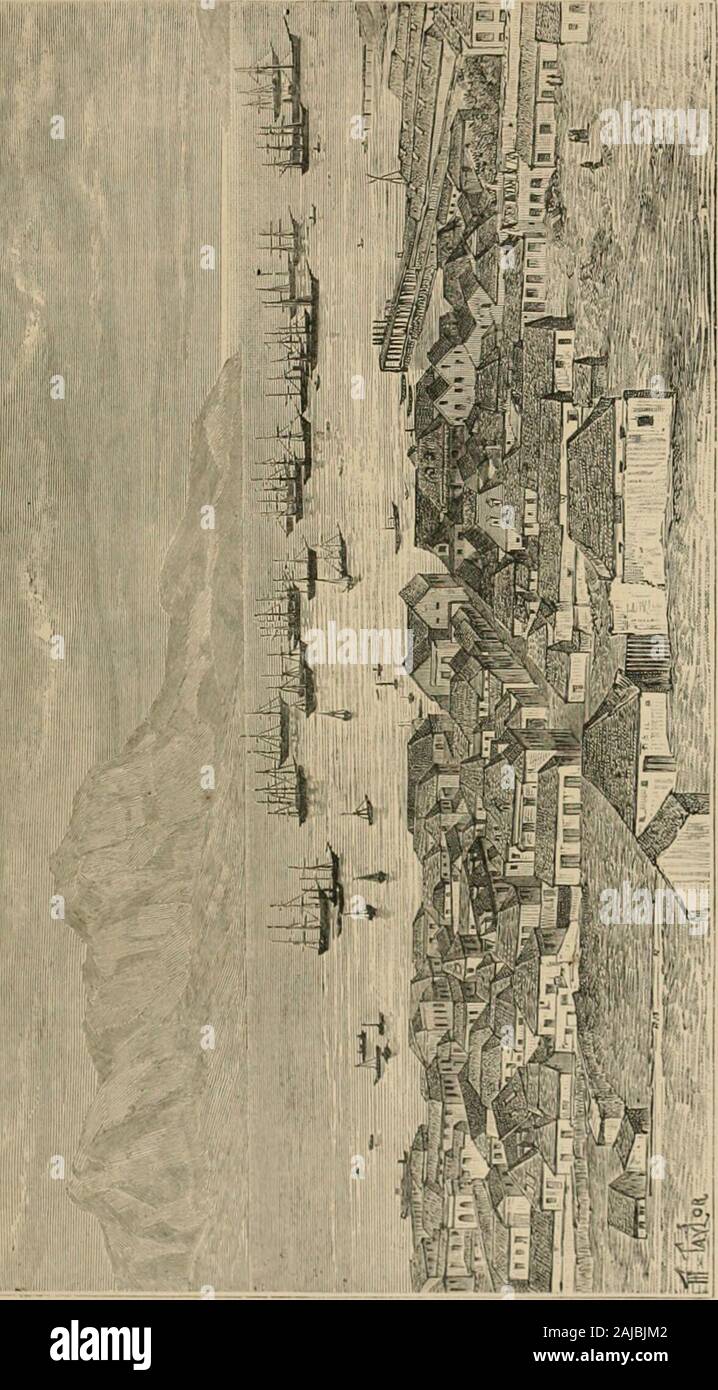Africa and its inhabitants . vVe^it or Lr°en^ ch . 3,300 Yards. Canarians, made their appearance towards the close of the last and beginning ofthe present century, and successfully introduced the cultivation of wheat on theupland slopes. In 1780 the slaves in Santo-Antam were declared free ; but thedecree passed unheeded, and the honour of their emancipation was reserved fora later generation. The inhabitants, nearh- all coloured, but sometimes with lighthair and blue ejes, are grouped chiefly in some villages near the north-east coast,and in the little town of Ribeira Grande on the same coast

Image details
Contributor:
The Reading Room / Alamy Stock PhotoImage ID:
2AJBJM2File size:
7.1 MB (484 KB Compressed download)Releases:
Model - no | Property - noDo I need a release?Dimensions:
1175 x 2126 px | 19.9 x 36 cm | 7.8 x 14.2 inches | 150dpiMore information:
This image is a public domain image, which means either that copyright has expired in the image or the copyright holder has waived their copyright. Alamy charges you a fee for access to the high resolution copy of the image.
This image could have imperfections as it’s either historical or reportage.
Africa and its inhabitants . vVe^it or Lr°en^ ch . 3, 300 Yards. Canarians, made their appearance towards the close of the last and beginning ofthe present century, and successfully introduced the cultivation of wheat on theupland slopes. In 1780 the slaves in Santo-Antam were declared free ; but thedecree passed unheeded, and the honour of their emancipation was reserved fora later generation. The inhabitants, nearh- all coloured, but sometimes with lighthair and blue ejes, are grouped chiefly in some villages near the north-east coast, and in the little town of Ribeira Grande on the same coast. On the neighbouringhills, from 3, 000 to 4, 000 feet high, the cultivation of cinchona has been introducedwith great success; nearly a thousand trees had already been planted in 1882. I!]. A o H oo ^ CAPE VERB ISLANDS. 91 Saint Vixczxt. • Saint Vincent (Sam-Vicente) is a geographical dependence of Santo-Antam, which, being larger and higher, abuost completely deprives it of the moisturebrought by the north-east trade vinds. Hence it almost everj-whcre presents aparched and arid appearance, the whole island possessing only one or two smallsprings and a single valley capable of cultivation. No attempt was made at asettlement till 1795, when some Negro slaves and white convicts were introduced;but even in 1829 the population was still no more than about a hundred. YetSaint Vincent was known to possess th(? best harbour in the archipelago, formed byan ancient crater eroded on the west side by the waves, and completely shelteredfrom all winds. The future commercial importance of this harbour had already been foreseen in1851, when an English speculator here established a coaling station for passingsteamers. The small town of ilindello, better known under the names of Porto-